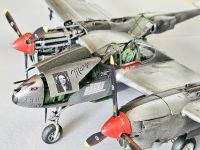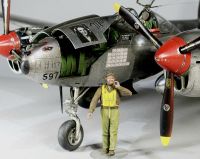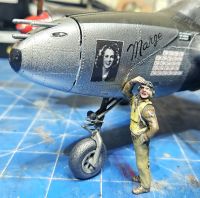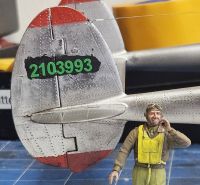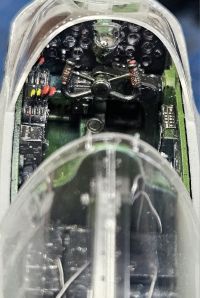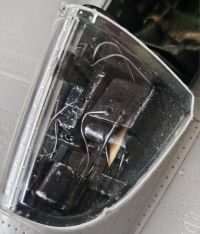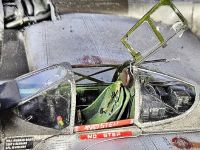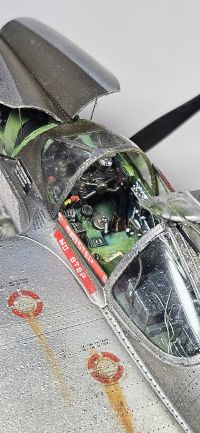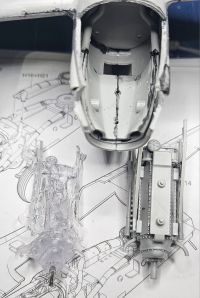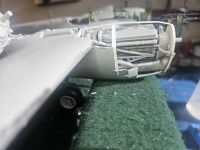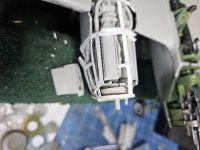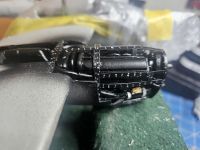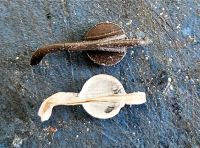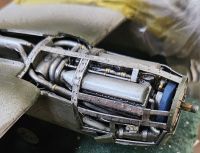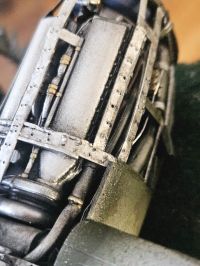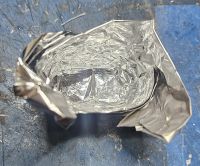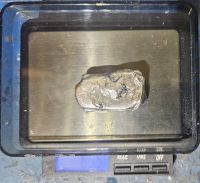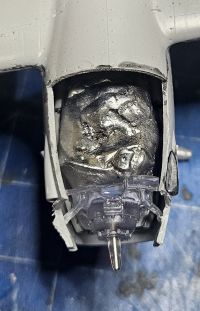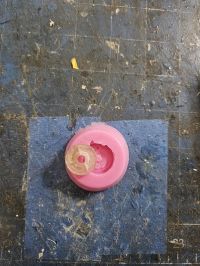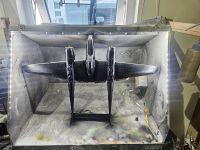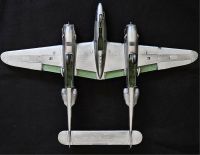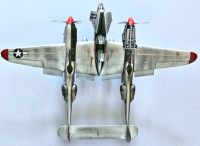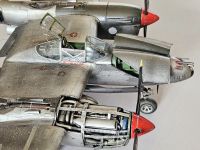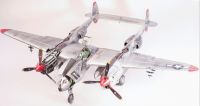Richard Bong's P-38L in a Hanger, Pt I
By Suresh Nathan
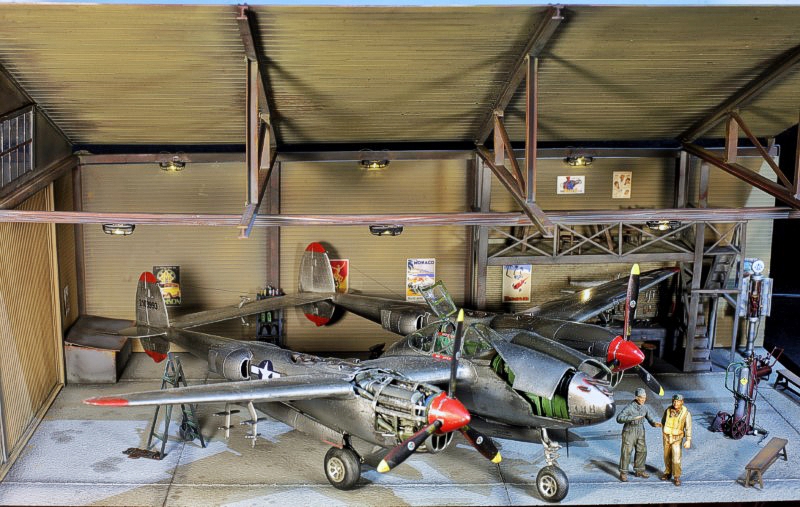
Part I: Building the P-38L
Introduction
In the P-38, Lockheed engineer Clarence "Kelly" Johnson and his team of designers created one of the most successful twin-engine fighters ever flown by any nation. From 1942 to 1945, US Army Air Forces pilots flew P-38s over Europe, the Mediterranean, and the Pacific, and from the frozen Aleutian Islands to the sun-baked deserts of North Africa. Lightning pilots in the Pacific theater downed more Japanese aircraft than pilots flying any other Army Air Forces warplane.
Richard Ira Bong
Richard "Dick" Ira Bong (September 24, 1920 – August 6, 1945) was a United States Army Air Forces major and Medal of Honor recipient in World War II. He was one of the most decorated American fighter pilots and the country's top flying ace in the war, credited with shooting down 40 Japanese aircraft, all with the Lockheed P-38 Lightning. He died in California while testing a Lockheed P-80 jet fighter shortly before the war ended.
After returning to the southwest Pacific in January 1944, he named his P-38 Marge and adorned the nose with her photo. In March another pilot was flying Bong's aircraft when it suffered engine failure and crashed in New Guinea, after the pilot, who survived, had bailed out. The present subject is the second Marge with serial number 2103993.
Model
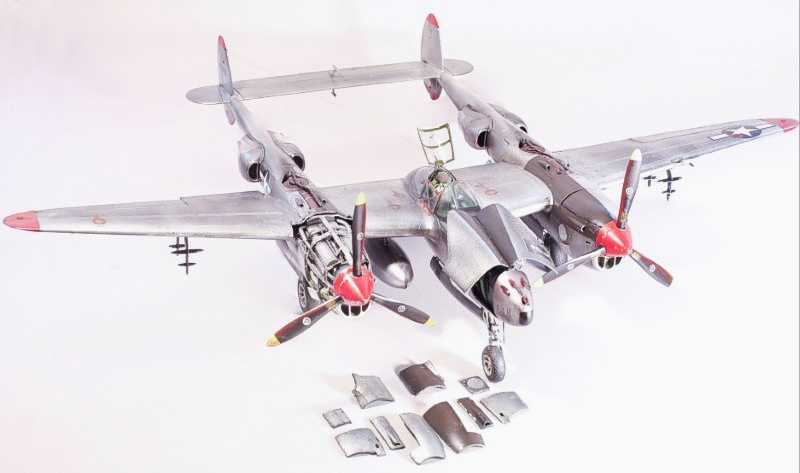
When it comes to the P-38 in 1/32 there is no real choice other than the Trumpeter kit which was new and still the best since 2004. The Revell one is of course the classic but there’s really no contest. At the time Trumpeter was making the transition from their first early models which were Chinese subjects and more toy like. The Lightning was one of their first good attempts at a decent model. Nevertheless, engineering could not keep up with design and it can be very fragile and does not tolerate handling much. The model has a fairly decent characterisation of the engines, cockpit and wheel bay but to pass muster they all needed a fair bit of super-detailing. I used Waldron for the cockpit but the rest was scratchbuilt.
Cockpit assembly
The cockpit is built out of the box with the addition of solder wire to the back of the instrument panel. This is barely visible in the final model. The radios were wired according to references and various wires and hoses were added in the cockpit. I used Waldron buckles for the seatbelts. I also had leftover Waldron placards from my earlier P-38M project and used them here. This improves the cockpit greatly. It is quite basic otherwise.
Undercarriage
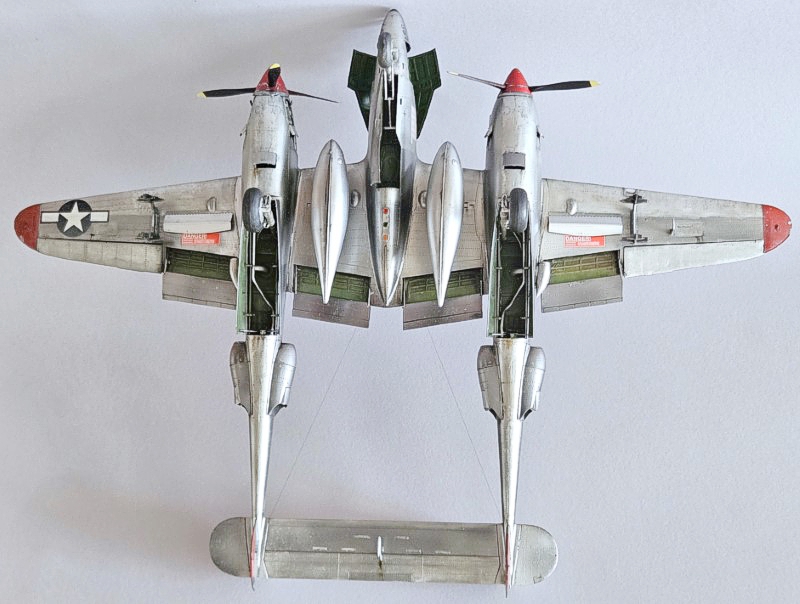
The undercarriage is decent enough and can be detailed by hollowing out panels and inscribing markings. Instead, I elected for hydraulics and wiring and it looks decent enough.
Engine Compartment
The Allison V-1710 engine on the Trumpeter is very good. I wanted to save one for a future twin mustang project and detailed the port-side engine. Ignition harness wiring was a needed addition, and I made this out of solder wire. The kit provides a teflon solution but it’s very inferior. The engine fits the Trumpeter engine bay but the problem is it lacks framing. I’ve never seen a picture with the engine in situ but without its framing and I believe it is designed to have the whole assembly detached for servicing. So, this had to be detailed. Also, I had to cut out all the panels to display it as Trumpeter does not give you the option. The panels just aft of the engine compartment is a major structural spar for the wing and the wing will droop if you remove it. Therefore, some structural spar needs to be replaced. One of the superchargers was missing and I had to make a copy of the existing one. The engine compartment was finished with a lot of solder wire of various gauges. A partial casting was made from the other engine, and it was filled with lead to achieve a nose sitter. More weights went into the propeller spinners and it just about sits right. The front of the bay was cut on a lathe and cast.
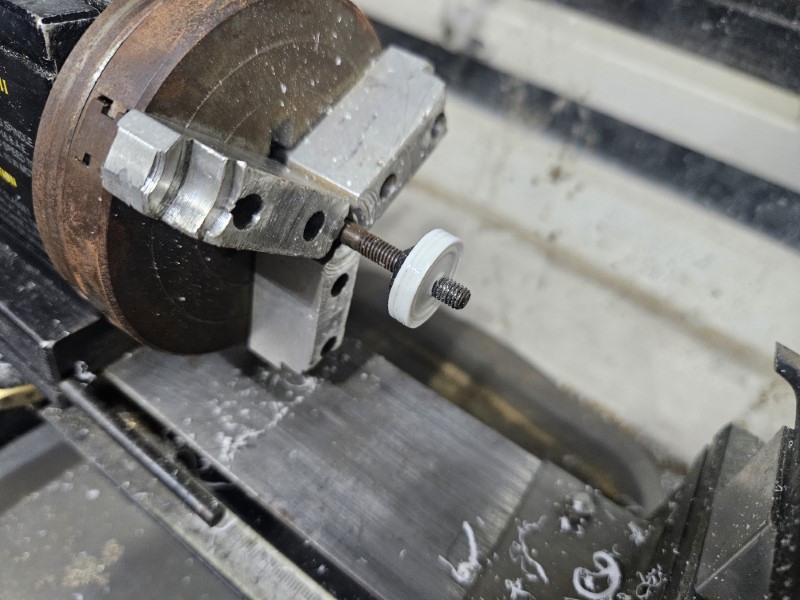
Machine-gun bay
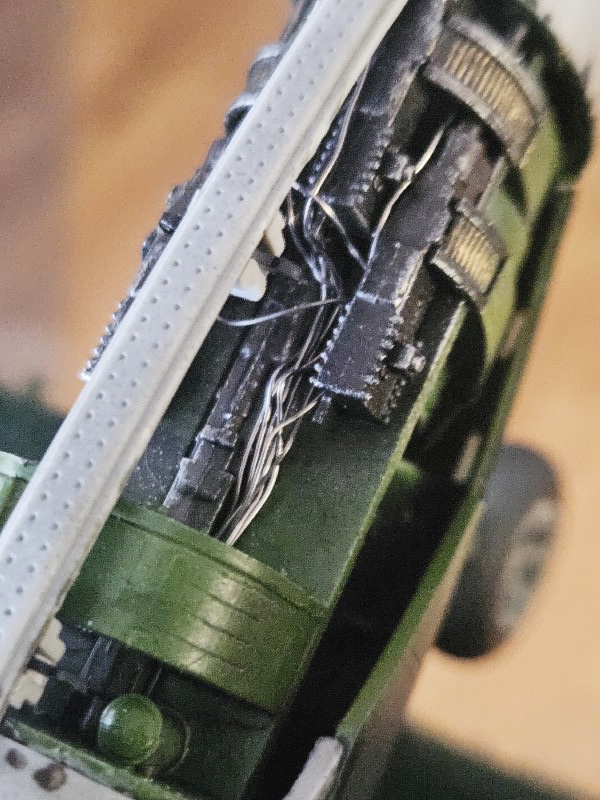
The bay is reasonably detailed and can do with some texturing on the ammunition racks. I chose to have it hinged open with the necessary wires detailed from references.
Painting and Marking

The markings were for P-38J-15-LO, 42-103993, Marge, 993, Capt. Richard I. Bong, 5th Fighter Command, Cape Gloucester, March 1944. The model was base painted in various shades of Alclad II over their primer, varnished with Alclad aqueous varnish and weathered with turpenoids and chipped sparingly. I used oil washes for weathering and drop filters for colour variation. The worn silver was a combination of sponge dabbing, silver pencil and undercoat with black and brush painting silver. I used AK true metal for touch-ups afterwards and I think it solves a major gap in metal paints as you can patch over mistakes without having to airbrush larges panels. I had the dated Eagle Superdecal set which had the earlier serial number and had to replace it with my own masks (wrong font but whatever). The set would have you cut out the print and paste the portrait on like the real one but I chose to print my own portrait as a decal in black and white. The actual thing was a black and white print that was colourised. I tried that but it didn’t quite look right and re-did it in black and white.
Conclusion
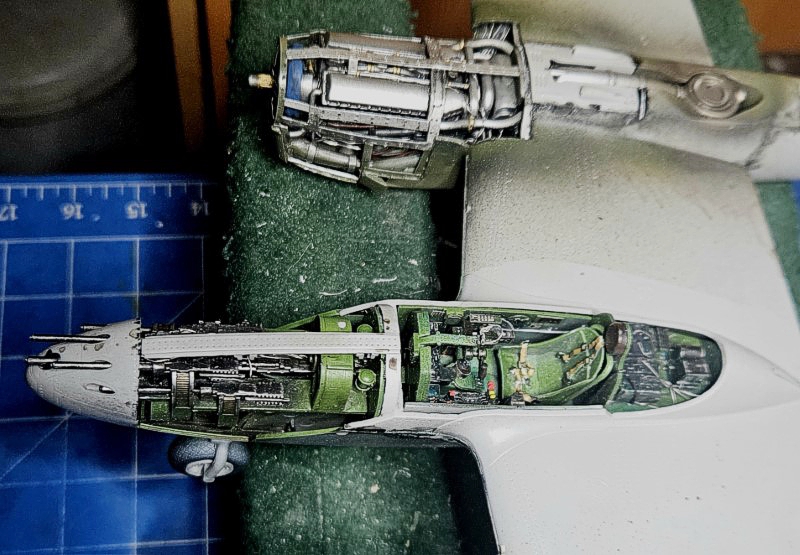
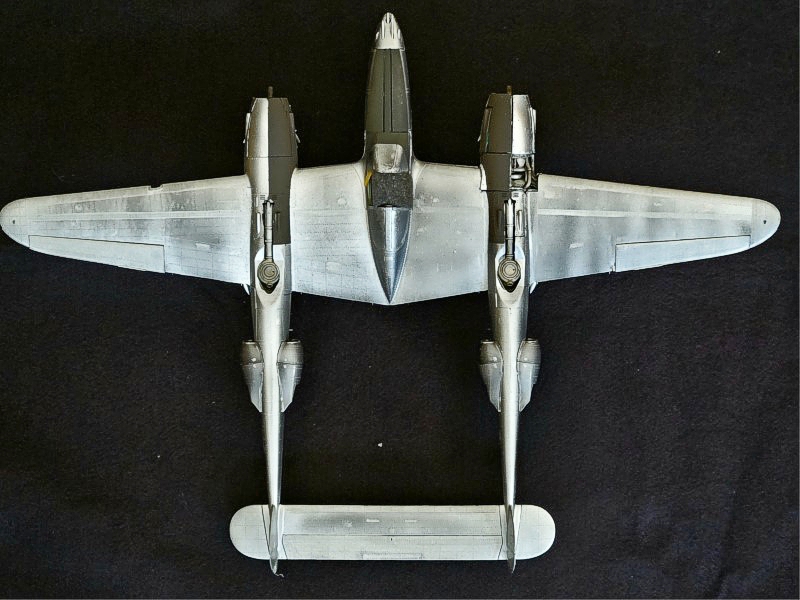
Model engineering issues aside this is a spectacular and impressive piece of kit. It was a struggle to keep it together after cutting out all the panels but ultimately it was a very satisfying (if too long) build.
References
- Aircraft Anatomy from World War II from Chartwell Books Inc
- Cockpit from Airlife
- Allied Aircraft Piston Engines of World War II from SAE International
- Squadron P-38 Lightning in Action
- Youtube videos
© Suresh Nathan 2024
This article was published on Saturday, October 05 2024; Last modified on Sunday, October 06 2024

